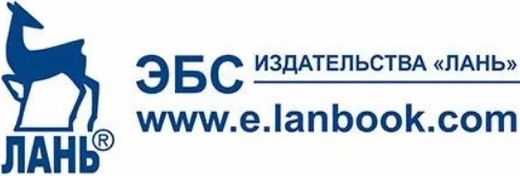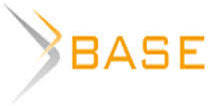КОММЕРЧЕСКАЯ ДИПЛОМАТИЯ ВО ВНЕШНЕЭКОНОМИЧЕСКИХ ОТНОШЕНИЯХ АРМЕНИИ
Aннотация
Одними из главных направлений реализации коммерческой дипломатии являются развитие внешней торговли и привлечение прямых иностранных инвестиций. Коммерческая дипломатия рассматривается в качестве элемента создания стоимости продукции. Вместе с тем применение коммерческой дипломатии имеет определенные критические стороны, обусловленные возможностями срастания государственных и частных интересов. Коммерческая дипломатия реализуется на двух уровнях: национальном и международном. В Армении, как развивающейся стране с малым внутренним рынком, особенно для малых и средних предприятий актуальна реализация коммерческой дипломатии на международном уровне, что обеспечивает национальные предприятия информацией о мировых рынках. Анализ современной структуры внешней торговли Армении, потоков прямых иностранных инвестиций позволяет сделать вывод о наличии существенного потенциала реализации коммерческой дипломатии.
Введение.
The beginning of 21st century has witnessed the consolidation of a process of globalization that expanded through the second half of the past century, primarily after the end of the Cold War and the fall of the communist regimes. Today’s global economy is in transition from a world leaded by the United States and other advanced economies, such as Japan and the European Union, to a multipolar system, where emerging economies such as Brazil, Russia, India and China (the so-called BRICS) are increasing their international influence and entering and investing in developed markets. [Гуилермо Вилануева Лоп, 2017] According to World Bank’s (WB) World Development Indicators (WDI) data compared with 2007 in 2017 share of developed countries in world’s GDP decreased from 74.4% to 62.7%. Most of trade barriers have decreased or removed during last decades. At global level World Trade Organization (WTO) and in regional level the regional economic integration groupings fostered to that. Although formal trade barriers reduced or removed other barriers like “cultural or institutional distance” become more important in international trade relations.
Taking into account the above mentioned we can state that commercial diplomacy is widely used among developed countries and it has been started to be used in developing countries. A universal definition of commercial diplomacy remains absent and it uses various academic fields such as political science, business management, marketing, international relations and political economy. Scholars include different aspects in their definition and commercial diplomacy is often confused with other activities such as export promotion, economic diplomacy, and trade diplomacy. [Бьорг Илсо Клинкби, 2013] Commercial diplomacy represents the efforts of governments to promote country’s business abroad and to attract foreign direct investment (FDI) using diplomatic channels and processes. Commercial diplomacy’s final goal is gaining access to new markets and serving the home state economy.
Commercial Diplomacy can be viewed a value-creating activity. By value is meant the utility combination of benefits delivered to the beneficiaries minus the cost of those benefits to business and government. Thus two types of commercial diplomacy services could be distinguished.
1. Primary activities which refers to trade and FDIs, research and technology, tourism and business advocacy.
2. Support activities which provide the inputs needed for the primary activities to occur intelligence, networking, and support for business negotiations, contract implementation and problem solving. [Костецки М. и Нарай О., 2007].
Value chain analysis indicates that most important primary activities of commercial diplomacy are trade promotion and foreign direct investments’ attraction. Among the support activities most important are information search and analysis as well as companies information requesting respond time.
Основнаячасть.
Thus the aim of our paper is to study the main conceptions of commercial diplomacy and its implementation for Armenia’s economy.
As we mentioned above one of the core activities of commercial diplomacy is trade and foreign direct investment promotion. Traditionally trade promotion was performed by the Ministry of Foreign Affairs. Commercial diplomacy can be implemented solely by the Ministry of Foreign Affairs or jointly with Ministry of Trade or Ministry of Economy. In the USA, China and France trade promotion is part of trade policy. Ministry of Trade is responsible for trade promotion and commercial diplomats work with the trade promotion organizations. Ministry of Trade has harmonized work with the Ministry of Foreign Affairs. In Australia, Canada and New Zealand trade promotion activity is separated from trade policy. In this case the responsible ministry (athority) is Ministry of Foreign Affairs which has harmonized work with the Ministry of Trade. In Scandinavian countries (Sweden, Norway, Denmark, Finland and Iceland) trade promotion activity integrated in Ministry of Foreign Affairs which has harmonized work with the Ministry of Trade. [Оливер Нарай, 2008]
There is also some criticism in literature concerning to commercial diplomacy:
- Commercial diplomats will only help their private friends and will therefore only encourage corruption within the diplomatic services.
- There is no need for commercial diplomat activities in a free market economy because buyers and sellers can meet without assistance.
- The quality of the relationship between commercial diplomats and their beneficiaries is highly dependent on the skills and motivation of the individual/team.
According to criticism public diplomacy activity transfers resources from the public sector to commercial activities while is not clear if the private benefits exceed the cost of providing the public service. [Якоп М., ванн Бергейк П., 2009] Taking into account the criticism we assume that for developing countries like Armenia in international level SME’s need at least basic market information which very often differs from their home market structure. In this aspect even productive companies can meet a lot of trade barriers in international trade. Commercial diplomacy can help to overcome trade barriers through diplomatic relations and it can be viewed as a public good which can help domestic economy to grow.
There are some factors that will affect creating and developing commercial diplomacy which can be divided into two groups: national and international. At the international level among the leading factors are trade liberalization, strengthening competition and globalization. At the national level decentralization, market size or domestic demand are the most significant determinants of the investment in commercial diplomacy. It is also important to guarantee the minimum level of knowledge and skill that every single economic diplomat must have. This level relates to:
- maintaining and providing overview of the business needs;
- being familiar with given complex sectors such as bio-tech and IT;
- providing the right networks and contacts;
- being familiar with local regulations, institutions and economic reports;
- searching for potential new business areas;
- attracting investments; and
- promoting positive corporate and country image. [Анна-Мария Боромиса, Санья Тисма, Анастатья Радица-Лейсач, 2012].
Republic of Armenia (RA) is a small open economy with very limited resources. Among the advantages of small states its worth to mention that they are or need to be more flexible and they can take advantage of being a small state because it can be easier to coordinate. It is a fact that the RA’s foreign policy has not straight commercial direction. The foreign policy of Armenia is aimed at strengthening the country’s external security, maintaining external favourable conditions for the development of the country, presenting the positions of Armenia on the international scene, raising efficiency of protecting the interests of Armenia and its citizens abroad, deepening engagement in the international organizations and processes, strengthening cooperation with the friendly and partner states, as well as resolving regional problems and creating an atmosphere of cooperation. [Министерство иностранных дел Республики Армения, 2018]. Besides this the main priorities of the RA’s foreign policy are:
- Armenia is consistent in strengthening and deepening special partnership and allied relationship with Russia, based upon the traditional friendly ties between the two nations.
- Armenia attaches importance to development and deepening of friendly partnership and enhancing cooperation with the United States.
- One of the foreign policy priorities of Armenia is the integration with the European family, on the basis of the commitments, undertaken within the framework of cooperation with the European structures and organizations, and the common values.
It is obvious that there are not clear economic directions of the RA’s foreign trade priorities. In this situation creating and implementing commercial diplomacy can help to solve the problem. Moreover taking into account modern economic situation Armenia needs strong and systematic commercial diplomacy.
According to World Bank Data average economic growth during 2010-2017 amounted almost 4%. The main characteristic of RA’s foreign trade flows is the deficit of trade balance. Armenia is a net-importer on the world market. In 2017 RA’s export was about 2.14 USD billion, import – 3.89 USD billion. (see Fig 1.)
Figure 1. Foreign trade flows of the Republic of Armenia, billion USD USA [5]
Рисунок 1. Внешнеторговые потоки Республики Армении, млрд. долл. США[5]
In 2015 Armenia’s import comparing to the value in 2014 significantly decreased (-0.9 USD billion) which was result of economic sanctions against Russia. Armenian trade balance deficit for many years has been compensated by the inflows of the transfers. In 2015 the transfers’ inflow amounted 1.6 USD billion, while in 2014 the value was about 2.3 USD billion. About 90% of the transfers into Armenian economy come from Russia [Айрапетян В.Л., Айрапетян Г.Р., 2018].
As well both geographical and product compositions of foreign trade flows are dramatic issues for the RA’s economy. The data given on Fig. 2 shows that in 2017 five countries covered 63% of the RA’s export and five countries covered 57% of its import. Product structure of export witnesses that preliminary Armenia supplies to foreign markets raw materials (their share is about 50%). Although the Herfindahl indexes for export and import are about 0.12 (it means that foreign trade flows are moderately concentrated); the values of this index for some product groups exceed 0.3, thus export of these goods is highly concentrated (Table 1). High concentration of foreign trade flows means that a limited number of agents are involved in this activity.
Figure 2. Main Trade Partners of Armenia, as a share of total trade flow, %, 2017 [База данных Trade Map., 2018]
Рисунок 2. Основные торговые партнеры Армении, как доля в общем торговом потоке, %, 2017г.
Dynamics of foreign direct investments (FDI) in Armenia has demonstrates the decreasing trend for last decade (Fig 3): net inflows of FDI reduced since 944 USD million in 2008 till 250 USD million in 2017.
As we mentioned above the commercial diplomacy mainly concentrates on promoting of export and attracting of FDI. The given empirical analysis allows concluding that there is a huge potential which is not used yet and implementation of successful commercial diplomacy can improve the situation.
Table 1.
Product Composition of Armenia’s Foreign Trade Flows [База данных Trade Map., 2018]
Таблица 1.
Товарная структура внешнеторговых потоков Армении
EXPORT from Armenia | As a share to total export, % | Concentration of importing countries1 |
All products | 100 | 0.12 |
Ores, slag and ash | 28 | 0.3 |
Natural or cultured pearls, precious or semi-precious stones, precious metals, metals clad ... | 12 | 0.38 |
Beverages, spirits and vinegar | 11 | 0.69 |
Tobacco and manufactured tobacco substitutes | 11 | 0.31 |
Aluminium and articles thereof | 5 | 0.27 |
Articles of apparel and clothing accessories, not knitted or crocheted | 4 | 0.36 |
Iron and steel | 4 | 0.8 |
Copper and articles thereof | 4 | 0.85 |
Mineral fuels, mineral oils and products of their distillation; bituminous substances; mineral ... | 3 | 0.73 |
Furniture; bedding, mattresses, mattress supports, cushions and similar stuffed furnishings; ... | 2 | 0.96 |
Others | 16 |
|
IMPORT to Armenia | As a share to total import, % | Concentration of supplying countries1 |
All products | 100 | 0.12 |
Mineral fuels, mineral oils and products of their distillation; bituminous substances; mineral ... | 16 | 0.55 |
Machinery, mechanical appliances, nuclear reactors, boilers; parts thereof | 9 | 0.09 |
Electrical machinery and equipment and parts thereof; sound recorders and reproducers... | 7 | 0.2 |
Natural or cultured pearls, precious or semi-precious stones, precious metals, metals clad ... | 5 | 0.26 |
Pharmaceutical products | 5 | 0.12 |
Vehicles other than railway or tramway rolling stock, and parts and accessories thereof | 4 | 0.12 |
Plastics and articles thereof | 3 | 0.1 |
Aluminium and articles thereof | 2 | 0.57 |
Articles of iron or steel | 2 | 0.15 |
Iron and steel | 2 | 0.25 |
Others | 45 |
|
1 - The concentration is based on the Herfindahl index [База данных Trade Map., 2018]
Commercial diplomacy usually focuses on small and medium enterprises (SMEs), because SMEs need to get basic market information (list of potential buyers, distributors, importers and etc.). Multinational corporations have or can allocate huge financial resources for their own marketing and market entry strategies and don’t need basic market information. Although multinational corporations can use commercial diplomacy in order to influence relevant policy-making and regulations in the host country. So implementation of successful commercial diplomacy will help to develop SMEs sector in Armenia.
Figure 3. Armenia’s foreign direct investments, million USD
Рисунок 3. Прямые иностранные инвестиции в Армении, млн. долл. США
*База данных Всемирного банка. Мировые показатели развития, 2018
Besides this governments can benefit from commercial diplomacy services because ‘image impact’ extends in both directions: successful companies may improve the country’s reputation, and ‘successful’ governments might have a positive impact on a business firm’s image. [Оливер Нарай, 2008]. Ambassadors, commercial attachés and other relevant diplomats can have a huge role in developing and maintaining export markets, attracting FDI and creating an image of the host country.
In Armenia commercial diplomacy or economic diplomacy term is not widely used or known. On November 1-2 2016, “Economic Diplomacy” two-day workshop was held at the Ministry of Foreign Affairs of the RA with the support of the International Finance Corporation, a member of the World Bank Group. [Министерство иностранных дел Республики Армения, 2018]
With nothing changed we are passive target for those countries who already successfully implement commercial diplomacy. In case of creating and implementing commercial diplomacy Armenia will become active actor among other countries. In other words government need to state that promoting Armenia’s commercial interests should be central in its foreign policy. Commercial diplomacy has to be central in government program for further economic growth.
There are already some steps to create and implement commercial diplomacy in Armenia. Business Armenia (the rebranded Development Foundation of Armenia) was established by the Government of the RA in 2015, with the mission of promoting the country's economic growth. The aim of the Foundation is to enhance Armenia’s rating and competitiveness, attract investments and promote export. Business Armenia promotes cooperation between public authorities and entrepreneurs, implements joint projects, supports foreign investments and provides post investment services [Бизнес Армения, 2018].
Business Armenia has supported exports of over 5 billion 910 million AMD (12.1 million USD dollars) during the months from January to September in 2018. This figure exceeds that of all 12 months of 2017; 5.7 billion AMD (almost 11.8 million USD dollars). Business Armenia has supported foreign investments of over 17.4 million dollars. MOUs on 28.6 million worth of investments have been signed [Бизнес Армения, 2018].
However it is not sufficient to be succeeded in commercial diplomacy. In order to get maximum benefits Business Armenia needs to work or coordinate its work with Ministry of Foreign Affairs of the RA, RA’s embassies in other countries, Ministry of Economic Development and Investments of the RA, and etc.
Заключение
Summarizing it should be accent that in the long run it is expected that commercial diplomacy has to promote deepen competition and implement government economic program. As for many countries in case of Armenia as well for the first stage it’s important to underline whether commercial diplomacy should be conducted only by central government institutions or non government sector can take part and whether it should be bilateral activity or also needs to include multilateral activity. The other question that needs to be underlined at the first stage of creating and implementing successful commercial diplomacy is whether companies need to be highly internationalized or no. As well the selected model of commercial diplomacy should, therefore, respond to the needs of the economy, which in turn depends on the structure of that economy (size of the market and companies, sectors in which they operate and etc.).

















Список литературы